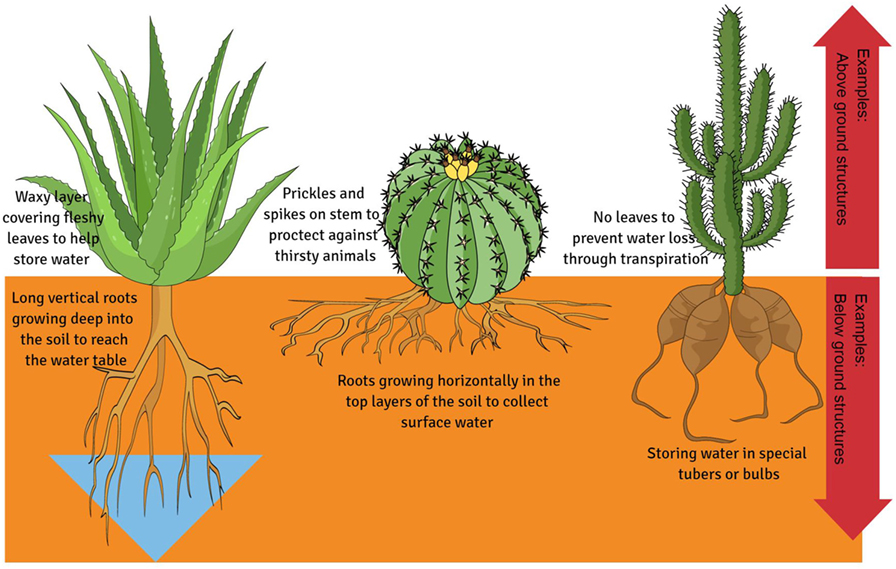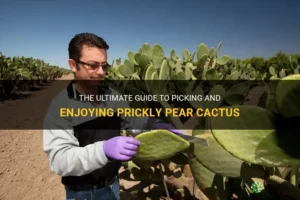Cacti are often perceived as resilient sentinels of arid landscapes, defying the harshness of their surroundings with remarkable adaptations. Among these adaptations, their root systems play a pivotal role in their survival, serving as intricate networks for water and nutrient absorption. Understanding the depth of cactus roots reveals not only their ecological significance but also the remarkable strategies that these plants employ to thrive in environments that may seem inhospitable to life.
The Hidden Depths: An Overview of Cactus Root Systems
The cactus root system is a marvel of evolutionary engineering, comparable to a complex labyrinth hidden beneath the sandy surface. The roots can vary significantly in depth and structure depending on the species and the environment in which they grow. In general, cactus roots are categorized into two primary types: shallow and deep. Each type serves distinct purposes, enabling the plant to optimize its resource acquisition.
Shallow roots, often extending just below the surface, spread out widely. They are adept at capturing rainwater during brief but intense storms. This characteristic is akin to an intricate web, yielding an immediate influx of moisture as the rain falls. However, these roots can only sustain the cactus for a short period after rainfall. In contrast, deeper roots delve into the earth, sometimes reaching astonishing depths of 30 feet or more. This extended reach allows cacti to tap into subterranean reservoirs, providing them with a lifeline during prolonged droughts.
Cacti in Their Element: The Dance with Drought
In ecosystems where water is scarce, the cactus’s survival hinges on its ability to economize moisture. Much like a masterful performer in a dance, the roots of cacti adapt their movements with the rhythm of the environment. Where moisture is abundant, shallow roots spread out, soaking up what they can, while deeper roots lie dormant, patiently awaiting their opportunity. Conversely, during periods of aridity, the deeper roots awaken, scavenging water from layers of the earth that are inaccessible to the shallower counterparts.
To illustrate, the saguaro cactus, an emblematic figure of the American Southwest, showcases this intricate relationship. Its roots can extend up to 20 feet, utilizing both shallow and deep systems. Following infrequent rains, the shallow roots will actively absorb water while the deep roots store their energy, ensuring the plant’s survival long after the rain has evaporated. This biophysical strategy not only secures the plant’s continued existence but also imbues the surrounding ecosystem with vitality, as other organisms benefit from the microhabitats created by the saguaro’s growth.
The Interconnected Web: Cacti and Their Environment
Cacti do not exist in isolation; they are fundamental components of a larger ecological framework. Their root systems contribute significantly to soil stability and nutrient cycling. By anchoring the soil, cacti prevent erosion and promote the retention of moisture. This positive feedback loop enables a variety of organisms to flourish, creating a vibrant ecosystem where plants, animals, and microorganisms closely interrelate.
Moreover, the roots of cacti have a fascinating ability to form symbiotic associations with fungi, known as mycorrhizal relationships. These fungal partners extend their filaments into the soil, increasing the root’s access to water and nutrients in exchange for carbohydrates produced during photosynthesis. This relationship epitomizes the idea of synergy, where both the cactus and the fungi thrive through collaboration.
Furthermore, the depth of cactus roots influences not only individual plants but also entire plant communities. By tapping deep water sources, cacti create a microclimate that supports the growth of other plant species, enabling them to also reach for survival. Thus, cactuses are holistic agents in their environments, adept at nurturing a community while simultaneously ensuring their perseverance.
Rooting for the Future: Cacti and Climate Change
The unique adaptations of cacti, including their roots, place them at a critical intersection as we face the looming impacts of climate change. A fluctuating climate brings unpredictable rainfall patterns and prolonged dry spells, both of which could alter the delicate balance cacti have established with their environment. As water sources become increasingly erratic, the adaptability of their root systems will be tested in unprecedented ways.
The depth and structure of cactus roots may also reflect how species will fare as climates evolve. Some desert species might thrive, tapping deeper into groundwater. Others, especially those adapted to specific rainfall patterns, might struggle, as the contours of their habitat transform inexorably. Therefore, understanding cactus root systems is not merely an academic exercise; it is a crucial component of conservation and ecological planning.
In conclusion, the depths of cactus roots tell a profound story of survival, resilience, and complex interrelations within ecosystems. Each root serves a dual purpose: sustaining the cactus while nurturing the environment around it. With climate change challenging the fabric of the ecosystems these captivating plants inhabit, the role of their roots becomes ever more critical. Ultimately, the exploration of how deep cactus roots go not only illuminates the extraordinary ingenuity of these plants but also emphasizes the vital relationships that bind them to the world they inhabit.





Leave a Comment